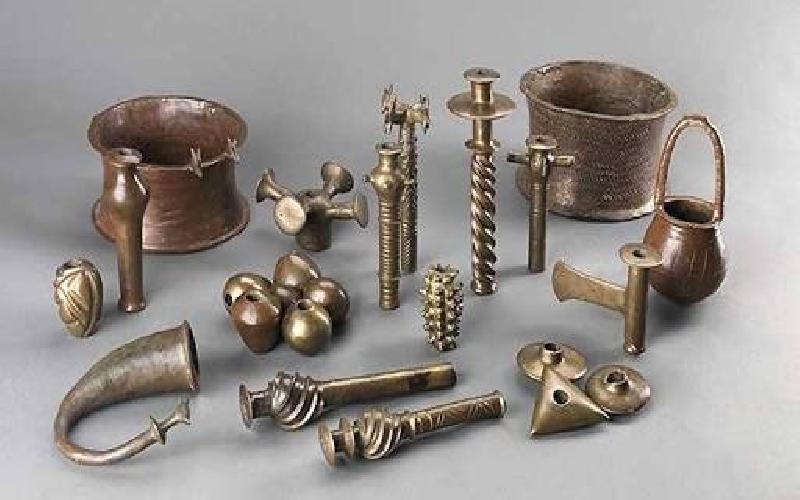Chalcolithic age as the age of modernization


“Sometimes, beautiful arts arose from silly shadings “ . No doubt that our present metal phase has stone-copper phase as a base. Why is the stone copper phase given utmost importance? Copper were used as a symbol for cultural development which is called as “the chalcolithic culture ”.
Primary usage of copper and stones :-
Ancient people used copper and stone made weapons as their first line of defence. Excavations reveals that small tools made of copper and stones were found in larger quantities. In many places stoneblade industry flourished and continued to manufacture axes made of stones.
Ancient people were so intellectual that they setup the manufacturing units near hilly and riverine tracks, because of the fact that they could get raw material in ease.
Pottery and their design:-
People belonging to this culture ie. the Chalcolithic , used different types of pottery among which the black and red model tops. Moreover people had many variation in their design which thorow light on the different communities they lived in.
Food industry :-
People of this phase are well involved in domestication and rearing of animals, cultivation of food grains etc. They use to rear sheep , pigs, buffalo and horses .They produced wheat and rice in large amount by essentially fed on beef and pork.
Moreover the crops that we eat today have an evolutionary relationship with this age. Crops like bajra, lentils, green gram, ragi, linseed, were also cultivated.
What about aquaculture? They had a very good background in cultivating crops , which are of water origin.
In eastern India fishing hooks have been found in large amount.
Spinning and weaving was also an important occupation at that time .
Burial procedures:- People use to follow different procedures based on their religious culture. They use to burry deaths in urns under the floors in north south direction. The myths and belief originates from the religious culture they practiced. This provides clue to the archeologist about the culture that prevailed at that regon .Studies on burials reveals that objects made of copper and pots with various design had been found. These things are assumed to be used by people in their next life .
Buildings:- Chalcolithic people used to construct their houses made of wattle and daub, occasionally mud bricks are used. They never used Burnt bricks for constructions. Excavations reveals large mud houses with ovens and circular pits. They had basic knowledge on buildings and use to construct houses with 5 rooms comprising of 4 rectangular and one circular suggesting that there were large family presence at that time.
Jorwe culture which arises as a sub class under chalcolithic culture , because of large settlement in the village named jorwe. It has distinct house constructed in an marvelous pattern .
Arts and crafts:- Of course, there were expert coppersmith and skilled stone workers . they have exhibited wide range of arts which reveals major practices , regulations , ethics which they followed.
Limitations of chalcolithic culture :-
The infant mortality rate was very high and the reasons are due to sever epidemic and lack of medical knowledge ( more number of infant skeleton have been found)
People did not have enough knowledge in alloying so that they can make use of bronze (tin+copper which were abundantly available at that time)
They had good artistic skills than language skills hence more number of arts and crafts were found than manuscripts .
Kerala Varma Pazhassi Raja is known as the Lion of Kerala. He was a soverign king and was the first person from Kerala to conduct an organised revolt against the British..
Napoleon Bonaparte is one of the greatest generals of war the world has ever seen. Read his biography here..
Chittaranjan Das was one of the important figures in Indian history. Read more about him below..